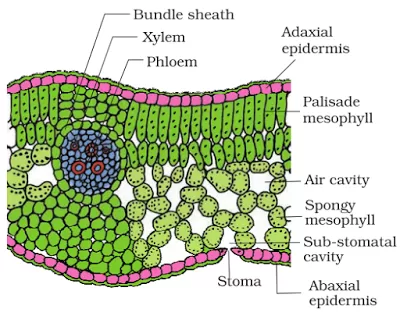How a Dorsiventral Leaf is Adapted for Photosynthesis Before we explore its adaptations for photosynthesis, let’s first grasp the anatomy of a dorsiventral leaf. Dorsiventral leaves, also known as bifacial leaves, possess distinct upper and lower surfaces. The upper surface, or adaxial surface, is typically exposed to sunlight, while the lower surface, or abaxial surface, is often shaded and faces the ground. This fundamental asymmetry is a cornerstone of their adaptation.
What is a Dorsiventral Leaf?
- Dorsiventral leaves
Dorsiventral leaves orient themselves at an angle to the main axis and perpendicular to the direction of sunlight. Most dicots have dorsi-ventral leaves that are net-veined, including most trees, bushes, garden plants and wildflowers. - Isobilateral leaves
Isobilateral leaves orient themselves parallel to the main axis and parallel to the direction of sunlight. Most monocots possess parallel-veined isobilateral leaves, including grasses and grasslike plants, lilies, irises, amaryllises etc.

Source: ScienceTopia
Video Lesson
How a Dorsiventral Leaf is Adapted for Photosynthesis
Dorsiventral Leaves have a large surface area so more light hits them. The upper epidermis of the leaf is transparent, allowing light to enter the leaf. The palisade cells contain many chloroplasts which allow light to be converted into energy by the leaf. The leaf also has air spaces which allow better diffusion of carbon dioxide into the leaf.